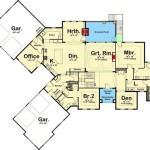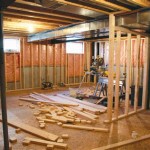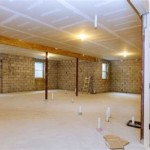How Much Does It Cost To Add An Egress Window In A Basement?
Adding an egress window to a basement is a significant home improvement project that can enhance safety, increase natural light, and potentially boost property value. An egress window serves as an emergency exit in case of a fire or other emergency, making it a crucial safety feature, particularly if the basement is used as a living space, such as a bedroom or family room. However, before embarking on this project, understanding the costs involved is essential for budgeting and planning purposes. The total cost can vary considerably depending on several factors, including the type of window, the complexity of the installation, local building codes, and geographic location.
The purpose of this article is to provide a comprehensive overview of the expenses associated with installing an egress window in a basement. It will examine the different components that contribute to the overall cost, helping homeowners make informed decisions and prepare for the financial aspects of this important home improvement project. Specific cost ranges will be provided to offer a general idea of the financial commitment involved, while emphasizing the importance of obtaining accurate quotes from local contractors for a more precise estimate.
Key Factors Influencing Egress Window Installation Costs
Several factors play a significant role in determining the overall cost of installing an egress window in a basement. These factors can be broadly categorized into material costs, labor costs, permit fees, and site-specific considerations. Understanding how these factors interact will help homeowners anticipate potential expenses and manage their budgets effectively.
Window Type and Size: The type and size of the egress window directly impact the material cost. Common egress window types include sliding windows, casement windows, and awning windows. Sliding windows often offer a wider opening and are typically more affordable. Casement windows, which crank open, can provide a larger unobstructed opening but may be more expensive. Awning windows, which hinge at the top and open outward, are less common for egress purposes due to limitations in opening size. The size of the required opening, dictated by local building codes, will also influence the window's price. Larger windows naturally require more materials and are therefore more costly.
Excavation and Foundation Work: Creating an opening for the egress window often involves excavating the surrounding soil and cutting through the foundation wall. The complexity of this work depends on the type of soil, the depth of the basement, and the thickness of the foundation. Rocky soil or a high water table can increase excavation costs. Cutting through concrete or masonry requires specialized tools and expertise, adding to the labor expense. In some cases, structural reinforcement of the foundation may be necessary to maintain the wall's integrity after the opening is created.
Window Well and Drainage: Egress windows typically require a window well to provide access and prevent soil from collapsing into the opening. Window wells are usually constructed from corrugated metal, plastic, or concrete. The size and material of the window well will affect its cost. Furthermore, proper drainage is crucial to prevent water from accumulating in the well, which can lead to basement flooding. Installing a drainage system, such as a gravel base or a French drain, will add to the project's overall expense.
Permits and Inspections: Obtaining the necessary permits from the local building department is essential for ensuring that the egress window installation complies with building codes. Permit fees vary depending on the municipality but can range from a few hundred to several hundred dollars. Inspections are also required to verify that the installation meets safety standards. Failure to obtain permits can result in fines and delays, so it is important to factor these costs into the budget.
Interior Finishing and Landscaping: After the egress window is installed, some interior finishing work may be necessary to complete the project. This could include framing the window opening, insulating around the window, and patching drywall. Landscaping around the window well can also enhance the appearance and prevent soil erosion. These finishing touches, while not always essential, can add to the overall cost of the project.
Detailed Breakdown of Costs
To provide a clearer picture of the expenses associated with adding an egress window, it is helpful to examine the individual cost components in more detail. Each component involves both materials and labor, and understanding the breakdown can help homeowners identify areas where they might be able to save money.
Window Purchase: The cost of the egress window itself varies depending on the type, size, and material. A basic sliding egress window might cost between $500 and $1,500. A casement window, especially one with high-quality hardware and insulation, could range from $800 to $2,500. The size of the window, as dictated by local egress code requirements, also significantly influences the price. The larger the required opening, the more expensive the window will be.
Excavation: Excavation costs depend on the amount of soil that needs to be removed and the ease with which it can be excavated. If the soil is loose and easy to dig, the cost might be lower. However, if the soil is compacted, rocky, or contains tree roots, the excavation process will be more challenging and expensive. Expect to pay between $500 and $2,000 for excavation, depending on the soil conditions and the size of the excavation required.
Foundation Cutting: Cutting through the foundation wall is a specialized task that requires the right tools and expertise. A professional contractor will typically use a concrete saw to create the opening. The cost of cutting the foundation can range from $500 to $1,500, depending on the thickness of the wall and the difficulty of the access. In some cases, structural reinforcement may be necessary to support the wall after the opening is cut, which would add to the expense.
Window Well Installation: The cost of the window well depends on the material and size. Corrugated metal window wells are typically the most affordable, ranging from $100 to $300. Plastic window wells offer better durability and aesthetics and can cost between $200 and $500. Concrete window wells are the most expensive but also the most durable, with prices ranging from $500 to $1,000 or more. Installation labor for the window well can add another $200 to $500 to the total cost.
Drainage System: Proper drainage is essential to prevent water from accumulating in the window well. A simple gravel base might cost only $50 to $100, but a more elaborate drainage system, such as a French drain, could cost between $300 and $800. The cost will depend on the depth and length of the drain, as well as the type of materials used.
Interior Finishing: Interior finishing costs can vary widely depending on the extent of the work. Basic framing and insulation might cost between $100 and $300. Drywall patching and painting could add another $200 to $500. If more extensive finishing work is required, such as adding trim or molding, the cost could be higher.
Permitting and Inspection Fees: Permit fees vary by municipality, but homeowners should budget between $100 and $500 for these costs. Inspection fees are typically included in the permit fee but may be charged separately in some areas. It is important to check with the local building department to determine the exact fees.
Cost-Saving Strategies for Egress Window Installation
While installing an egress window can be a significant investment, there are several strategies that homeowners can employ to potentially reduce costs. These strategies involve careful planning, selective DIY work, and comparison shopping.
Obtain Multiple Quotes: One of the most effective ways to save money is to obtain multiple quotes from different contractors. Get at least three to five quotes to compare prices and services. Be sure to ask each contractor for a detailed breakdown of the costs, including materials, labor, and any additional fees. Compare the quotes carefully and choose the contractor that offers the best value for your money.
Consider DIY Options (with Caution): While some aspects of egress window installation require professional expertise, there may be some tasks that homeowners can handle themselves. For example, a homeowner might be able to handle the excavation if they are comfortable operating machinery and have the necessary skills. However, it is important to be realistic about one's abilities and avoid taking on tasks that could compromise safety or the integrity of the installation. Cutting the foundation wall and installing the window should generally be left to professionals.
Choose Cost-Effective Materials: The type of materials used can significantly impact the overall cost of the project. For example, corrugated metal window wells are typically more affordable than concrete window wells. Similarly, a basic sliding egress window will be less expensive than a high-end casement window. Consider the trade-offs between cost and durability when selecting materials.
Plan the Project During Off-Season: Demand for contractors is often higher during the spring and summer months, which can drive up prices. Consider planning the project during the off-season, such as the fall or winter, when contractors may be more willing to offer discounts. However, be aware that weather conditions can sometimes delay or complicate the installation process during the off-season.
Bundle with Other Projects: If you are planning other home improvement projects, consider bundling the egress window installation with another project. Contractors may be willing to offer a discount if they can complete multiple projects at the same time.
Check for Rebates and Incentives: Some local governments or utility companies may offer rebates or incentives for energy-efficient home improvements, such as installing energy-efficient windows. Check with your local authorities to see if any such programs are available.
In summary, the cost of adding an egress window to a basement can vary widely depending on a multitude of factors. Thorough planning, careful consideration of material choices, and obtaining multiple quotes from reputable contractors are essential steps in achieving a cost-effective and safe egress window installation. Understanding the breakdown of costs and exploring potential cost-saving strategies will empower homeowners to make informed decisions and manage their budgets effectively.

How Much Does An Egress Window Cost To Install In 2024

Basement Egress Window Cost And Installing An

How Much Value Does An Egress Window Add Home Inspection Geeks

How Much Value Does An Egress Window Add Home Inspection Geeks

How Much Does An Egress Window Cost To Update Your Home S Look Happy Diy

Fixr Com Cost To Install An Egress Window

Installing Egress Windows Pros Cons Costs

How Much Do Egress Windows Cost In 2024 Checkatrade

How Big Should A Basement Window Be Basementing Com

How To Install A Basement Egress Window Acculevel
See Also








